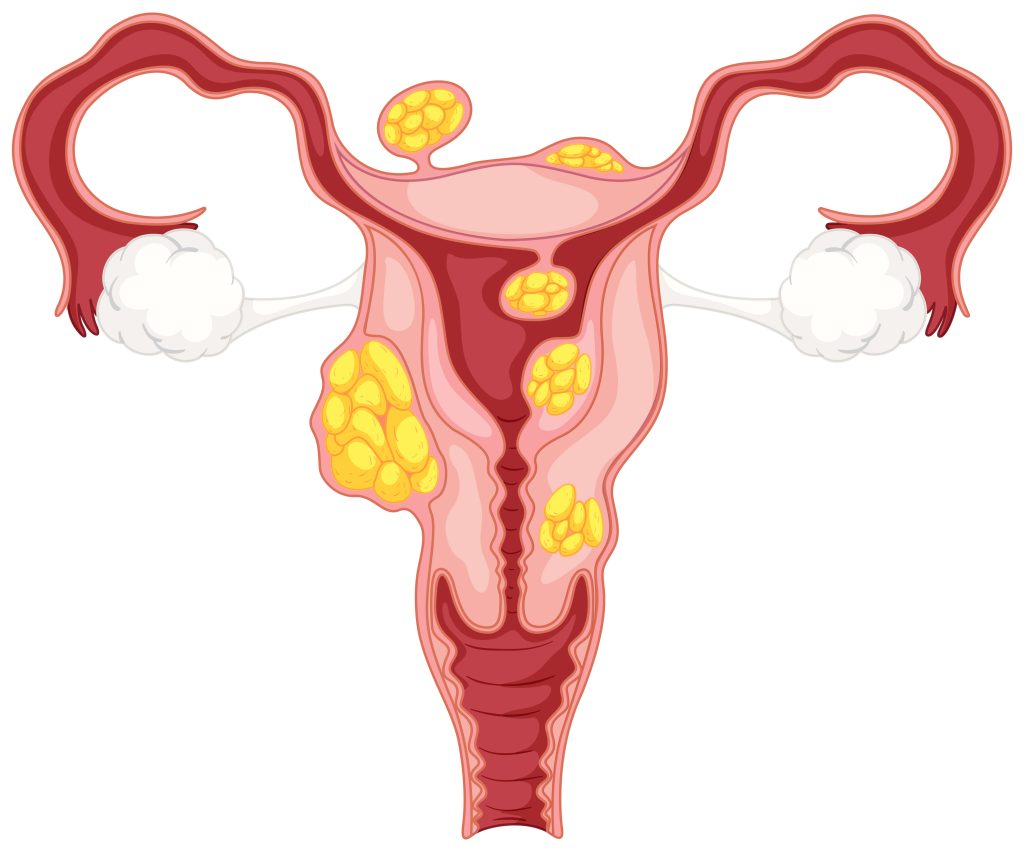
What is endometriosis?
Endometriosis is a disorder in which endometrial tissue (lining of inner layer of uterus) grows outside the uterus. The inner lining of the uterus is made up of endometrial tissue that is necessary for the embryo to implant to achieve a successful pregnancy. When this endometrial tissue is found growing in regions outside the uterus, it can lead to heavy and painful menstrual bleeding and cause infertility. This condition is known as endometriosis.
This tissue that grows outside the uterus, behaves like normal endometrial tissue that lines the uterus, and so every cycle, it sheds and causes bleeding. However, this blood has no area to get eliminated, which results in a chronic inflammatory reaction. This can cause scar tissue in surrounding areas.
The different kind of endometriosis is as follow:
- Endometriomas or Chocolate cysts- found in ovaries
- Superficial Peritoneal Endometriosis- found in peritoneum (lining of pelvis and abdomen)
- Deep Infiltrating Endometriosis- found in bladder, rectum, bowel region, ovaries
- Abdominal Wall Endometriosis- found on abdominal wall
- Found outside pelvic region- in rare cases
What are the causes of endometriosis?
The exact cause of endometriosis is not well understood. However, doctors believe that endometriosis could arise due:
- Genetics- if endometriosis runs in your family, it is possible for you to get it
- Retrograde menstruation- when period blood that contains the endometrial tissue passes back into your fallopian tube and pelvic cavity and implants on your organs.
- Immune factors or hormones can cause different cells (like embryonic cells or peritoneal cells) to transform into endometrial cells and be transported via blood and grow outside the uterus.
- Endometrial cells can attach to a surgical incision like a C-section during childbirth.
What are the symptoms of endometriosis?
The symptoms of endometriosis include:
- Heavy menstrual bleeding
- Severe pain or cramps during menstruation
- Severe back pain during menstruation
- Painful sexual intercourse
- Pain during passing urine or stool
- Depression
- Bloating and nausea
- Difficulty in pregnancy
How is endometriosis diagnosed?
Endometriosis is diagnosed by conducting a few tests such as:
- History of symptoms
- Pelvic examination
- Trans-vaginal or abdominal ultrasound
- Laparoscopy
- Biopsy
How is endometriosis treated?
Endometriosis treatment is based on a woman’s symptoms and whether or not she wants to get pregnant. Treatment can help alleviate symptoms, however, this condition cannot be cured. Treatment includes:
- Pain medication
- Hormonal medication
- If pregnancy is desired, then surgery may be required to remove scar tissue, adhesion, and endometriosis lesions

